|
|
When lifting parcels, observe the following safety tips:
- Straddle the load. To improve stability, comfortably spread your feet (normally shoulder width apart), putting one foot by the front of the parcel (the side facing you) and one foot to the left or right of the parcel. (See Exhibit 222.1(a).)
Exhibit 222.1(a)
Lifting a Parcel
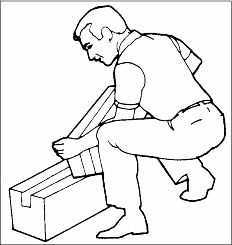
- Keep your back straight. Use a squatting position. (See Exhibit 222.1(b).) Remember that “straight” does not mean “vertical.” A straight back keeps the spine, back muscles, and organs in correct alignment.
Exhibit 222.1(b)
Proper and Improper Lifting
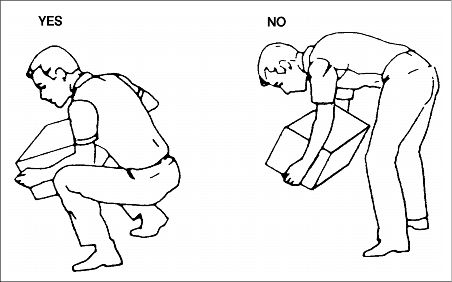
- To prevent injuries, use proper lifting procedures. The discs between the spinal vertebrae are pinched when bending. (See Exhibit 222.1(c).) These discs may slip or rupture during improper lifting, causing severe pain or disability. Muscles or ligaments also may stretch or tear during improper lifting. Improper lifting procedures can also compress the stomach, which can cause a hernia.
Exhibit 222.1(c)
Pinched Vertebrae
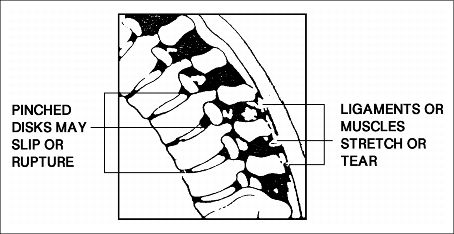
- Draw the load close to your body and keep it there while completing the lift and when carrying the load. Tuck arms and elbows into your sides. When arms are held away from the body, they lose much of their strength, placing more stress on back muscles. Keeping your arms tucked in helps keep body weight centered.
- Grasp the parcel near the top of the farthest corner, wrapping your palm around the edge. Hold the opposite bottom in the palm of your other hand. Use the full palm because fingers alone have little strength.
- Keep your head upright when lifting and permit it to move freely. This helps maintain balance because the center of gravity changes with load acquisition.
- Position your body so that its weight is centered over the feet. This provides a more powerful line of thrust and ensures better balance. Start the lift with a thrust of the rear foot. Begin to lift straight up, smoothly and without stopping, by pushing your legs and keeping your back straight, as shown in Exhibit 222.1(g).
Exhibit 222.1(g)
Beginning a Lift
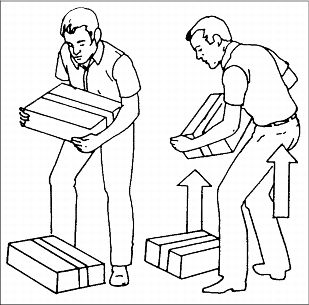
- Complete the lift to a standing position. Be sure your hold on the parcel is secure before moving. When you have to pivot or turn, use your feet. Do not twist the body trunk, as shown in Exhibit 222.1(h).
Exhibit 222.1(h)
Completing a Lift
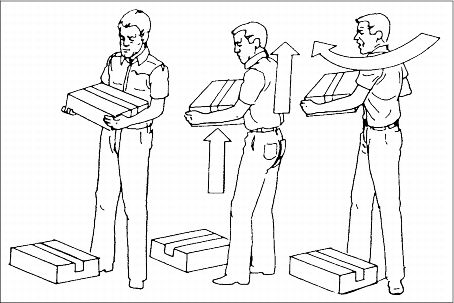
- When raising a parcel above shoulder height, follow the procedures just described to waist height. Then rest the edge of the parcel on a ledge, a stand, or your hip. Shift your hand position, so the parcel can be boosted after your knees are bent. Straighten your knees as you lift the parcel to your shoulder.
When lifting sacks, use the same general lifting procedures used for lifting parcels. Also observe the following precautions:
- The position of the hands varies somewhat; grasp opposite diagonal corners as shown in Exhibit 222.2.
- If the sack is to be carried any distance, rest it against your hip and stomach once it is waist high. Shift your hand position so the sack can be boosted after your knees are bent. Lift the sack to one shoulder, stoop lightly, with your hand on your hip, and rest the sack partly on your shoulder, arm, and back. Hold the sack at the front corner.
- When putting the sack down, swing it against your hip and stomach. If placing it on the floor or ground, bend your legs and lower the sack, keeping your back straight.
Exhibit 222.2
Lifting a Sack

|
|
